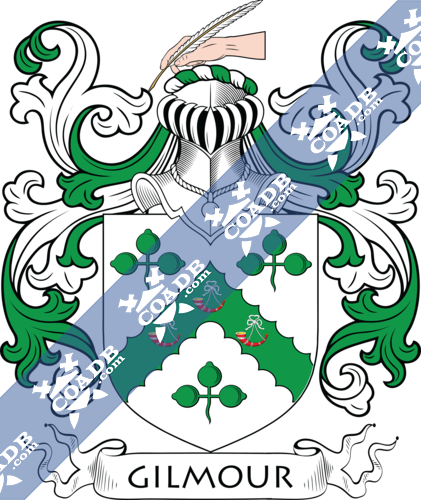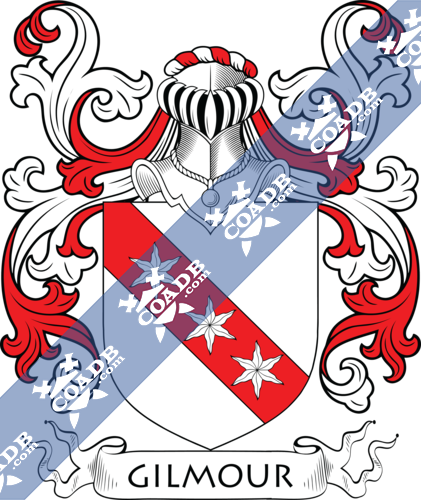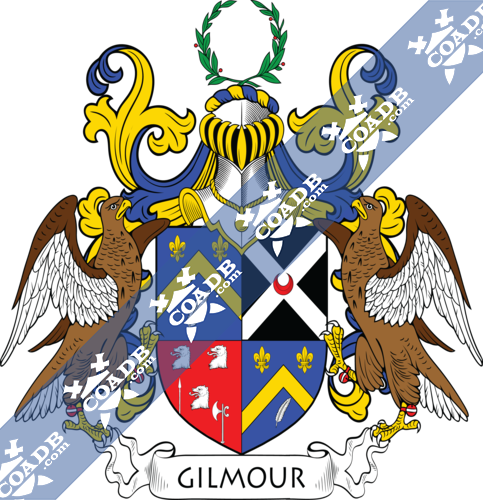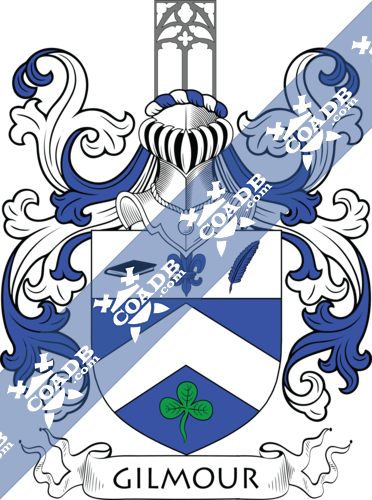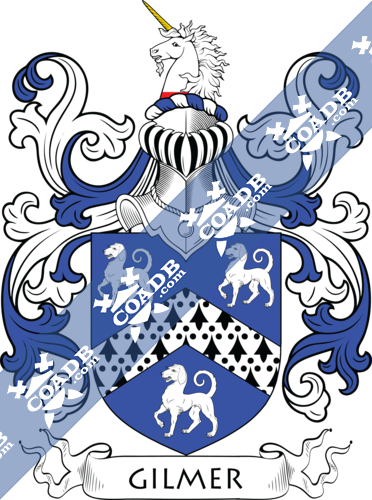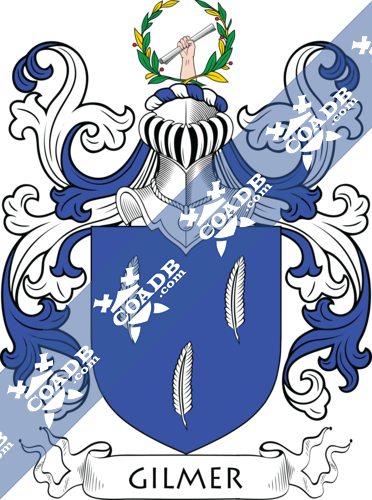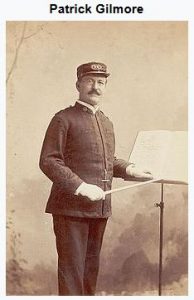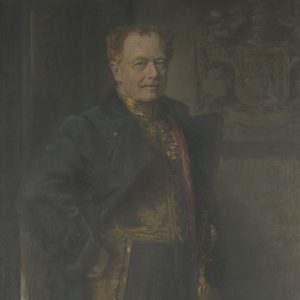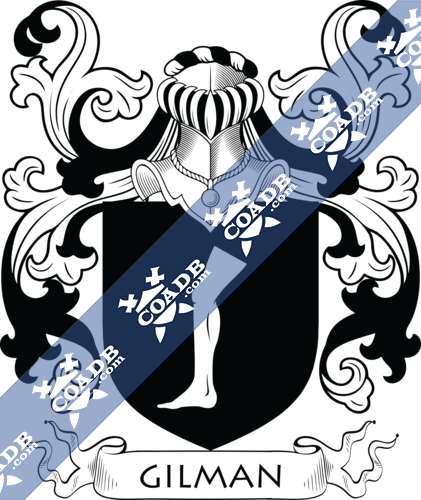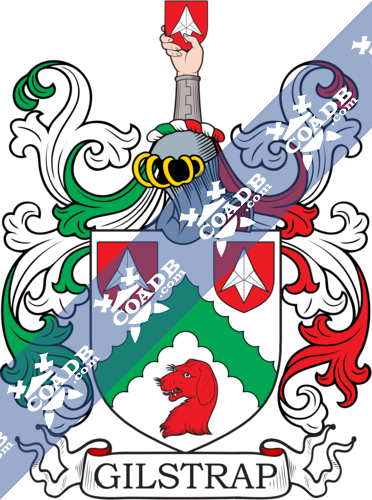Gilmour Family Crest, Coat of Arms and Name History
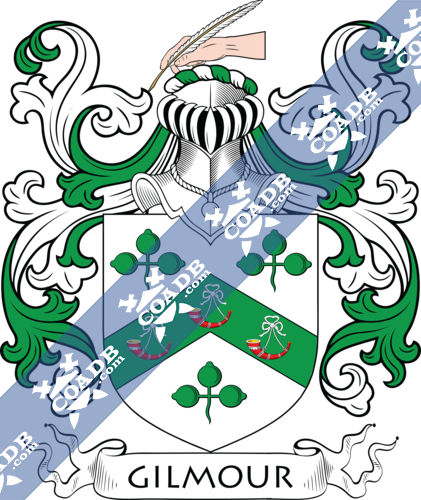
Gilmour Coat of Arms Gallery
Don’t know which Coat of Arms is yours?
We can do a genealogical research. Find out the exact history of your family!
Learn MoreSurname Name Meaning, Origin, and Etymology

This last name has three origin theories. First, this is a locational name meaning “of Gillmore”, which was a hamlet in the parish of Bishop Thornton in county Yorkshire. Second, it may be a baptismal surname meaning “the son of Gilmoir”, the Scotch personal name Gilmory or Gilmoir, meaning “servant of Mary”. Another source states the personal name it derived from was Gillemore, a Gaelic name, meaning follower or henchman of the chief, or one who carried the chief’s broadsword, coming from the words gille (servant) and mor (large or great). Third, it may be a surname that derives from the Irish personal name Mac Giolla Muire. One author states that it comes from the Gaelic Gille-mohr, meaning “great servant” and it referred to a person who was the armor-bearer of the Highland chief, and was a person who was selected for said position based on his strength and size. Another author states it was a named of a devotee of the Virgin Mary in the Christian religion, and that the family lived on the English /Scottish border among the Strathclyde-Briton people. Yet another source states it derives from the Olde English personal names Gyolingas or Getlingas, meaning “people of Getta”, combined with the suffix mor, meaning moor or marsh. One website discusses Gillander the Great Chief of Cumberland who lived in 1140 AD, and had a son with a name meaning “Gill the Big”. The Gilmours are part of clan Morrison of the Isle of Lewis.
Spelling Variations
Common spelling variations of this last name include: Gilmore, Gillmor, Gillmore, and Gilmur.
Early Bearers of the Surname
The first documented bearer of this surname was Richard Gilemore, who was recorded in the Feet of Fines of Huntindonshire in 1228 AD. A one Gilamore filius Gilandi and his cousin Gilamor were recorded in the Rotuli Litterarum Clausarum in Tyrri Londinesi and Valor Exxlesiasticus. A one Margaret Gilmer was baptized in 1586 at St. Dunstan’s Stepney in London.
History, Genealogy, and Ancestry
The book “A genealogical history of Irish families” discusses the Gilmore family in some detail. It states the Gilmore or McGilmer family is descended from Milesius, (mythical?) King of Spain. It was founded by Laoisearch Kean More, the son of Conal Kearnach, the well-known warrior. The name was anciently spelled Guilla More, and means “The Great Boy”. The clan held lands in the counties of Donegal, Down, and Antrim, where they held the districts of Ards. The prominent musician and bandleader, Patrick Sarsfield Gilmore of New York, was from this line.
Burke traces the lineage of this family back to John Gilmour of South Walton, who married Margaret Urie. They had a son named Allan Gilmour, who was of Montrave and Lundin, as well as South Walton in county Refrew, Glasgow, and sometimes Quebec, Canada. He was born in 1805 and in 1839 he marries Agnes, daughter of John Strang, and had five issue with her: Sir John (1st Baronet), Allan (1848), Mary, Agnes, and Margaret. He died in 1894 and was succeeded by his eldest son, Sir John Gilmour, 1st Baronet, J.P and D.L for county Fife. He was born in 1845 and was created a Baronet in 1897. He married Henrietta, daughter of David Gilmour of Quebec, and had issue with her: Allan (1874), Sir John (2nd Baronet), Harry (1878, became Captain of 16th Lancers), Ronald Farquharson (1888), and Douglas (1889, 2ND Lieutenant of 7th Seaforth Highlanders). He died in 1920 and was succeeded by his second son: The Right Honorable Sir John Gilmour, 2nd Baronet. He held numerous titles and positions, including being dispatched to South Africa, and serving in Egypt and Palestine during the First World War. He married Mary Louise in 1902 and had the following issue with her: John Edward (3rd Baronet, mentioned above), Anne and Margaret. His second wife was Violet Agnes, daughter of E.T Lambert. They had children as well:” Daphne Mary (1922).
Burke’s other book “The Landed Gentry” discusses another branch of this family: Gilmour of Eaglesham. It begins with a discussion of Allan Gilmour, Esq. of Eagelsham House in county Renfrew. He was born in 1820 and succeeded his uncle Allan Gilmour in 1849. In 1850, he married Isabella Buchanan, the daughter of William Ewing of Dunoon, and has children with her, including a son named Allan born in 1851. His eldest son was James Gilmore, who married Clementina, the daughter of John Stuart.
Early American and New World Settlers
Early settlers to America with this last name include William Gilmour (New Jersey 1685), Alexander Gilmour (Phildelphia 1774), Ann Gilmour (Delaware 1803), and Mary Gilmour (New York 1812).
James Allen Gilmour was born in 1847 in Norwich, Connecticut. He married Emily Hollister in 1874 and left three issue with her: Walter E., Marion Alice, and Harley James. Walter E. was born in 1879 in Edinburg, Ohio and passed away in 1919 in Lockport, New York.
Mottoes
The family mottoes include: 1) Perseveranti dabitur, meaning “It will be given to the persevering”, 2) In limine ambulo, meaning “”, and 3) Nil penna, sed usus, meaning “Not the quill, but its use”.
Notables
Famous people with this last name include: 1) Doug Gilmore (1863) who was a Canadian Hockey player who played for seven different teams in the National Hockey League, 2) Alan Gilmour who was a librettist and playwright, and 3) Clydle Gilmour (1912-1997) who was a Canadian print journalist and broadcaster.
Blazons & Genealogy Notes
1) (Craigmillar, co. Edinburgh, bart., 1683; the dau. and heir of the fourth and last bart. m. William Little, of Libberton). Az. a chev. betw. two fleurs-de-lis in chief or, and a writing pen full feathered in base ar. Crest—A garland of laurel ppr. Motto—Perseveranti dabitur.
2) (Little-Gilmour, of Craigmillar and Libberton, 1811). Quarterly, 1st and 4th, as the last; 2nd, sa. a saltire ar. charged with a crescent gu., for Little; 3rd, gu. three bears’ heads erased ar. issuing out of the dexter base a lance, and out of the sinister base a Lochaber axe, both in pale and of the last, for Rankine. Same Crest and Motto. Supporters—Two hawks rising ppr.
3) (Townsend, co. Lanark, 1754). Az. a chev. ar. on a chief of the second a fleur-de-lis betw. a writing pen full feathered of the first in the sinister, and a bible sa. on the dexter, in base a trefoil vert. Crest—An old Gothic church window ppr. Motto—In limine ambulo.
4) (South Walton, co. Renfrew, 1869). Ar. on a chev. betw. three trefoils slipped vert as many hunting horns stringed of the first. Crest—A dexter hand fessways couped, holding a writing pen ppr. Motto—Nil penna sed usus.
5) (Eaglesham, co. Renfrew). As the last, with the chev. engr. for diff. Same Crest and Motto.
6) Argent, a bend gules, three estoiles of the field. (The Encyclopaedia Heraldica,William Berry, 1828).
7) Az. a chev. erm. betw. three talbots, passant, ar.-Crest, a unicorn’s head, ar. couped gu. attired or. (The Encyclopaedia Heraldica,William Berry, 1828).
8) Az. three writing pens, paleways, ar.-Crest, a dexter hand, holding scroll of papers, within a garland of laurel ppr. (The Encyclopaedia Heraldica,William Berry, 1828).

